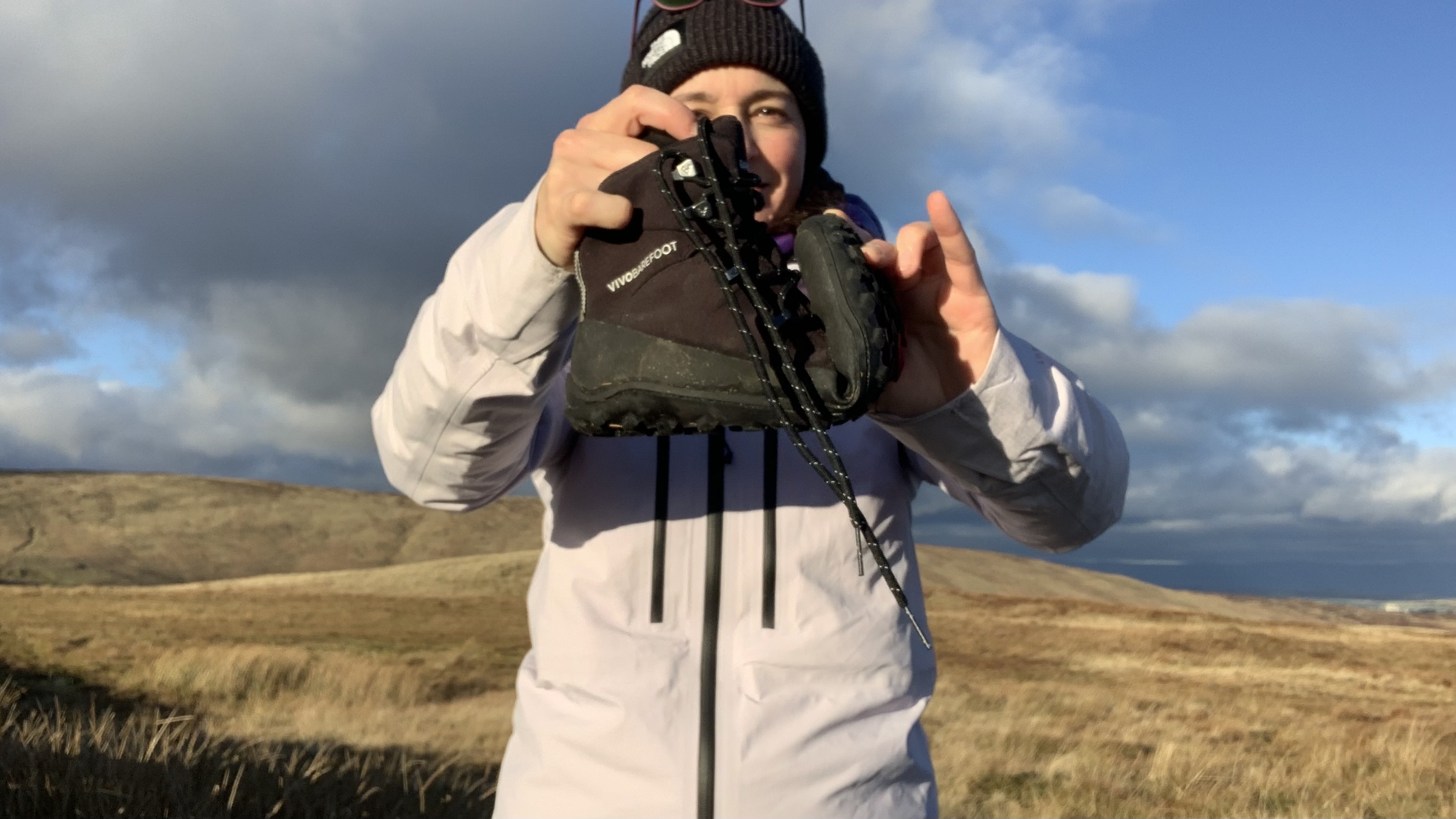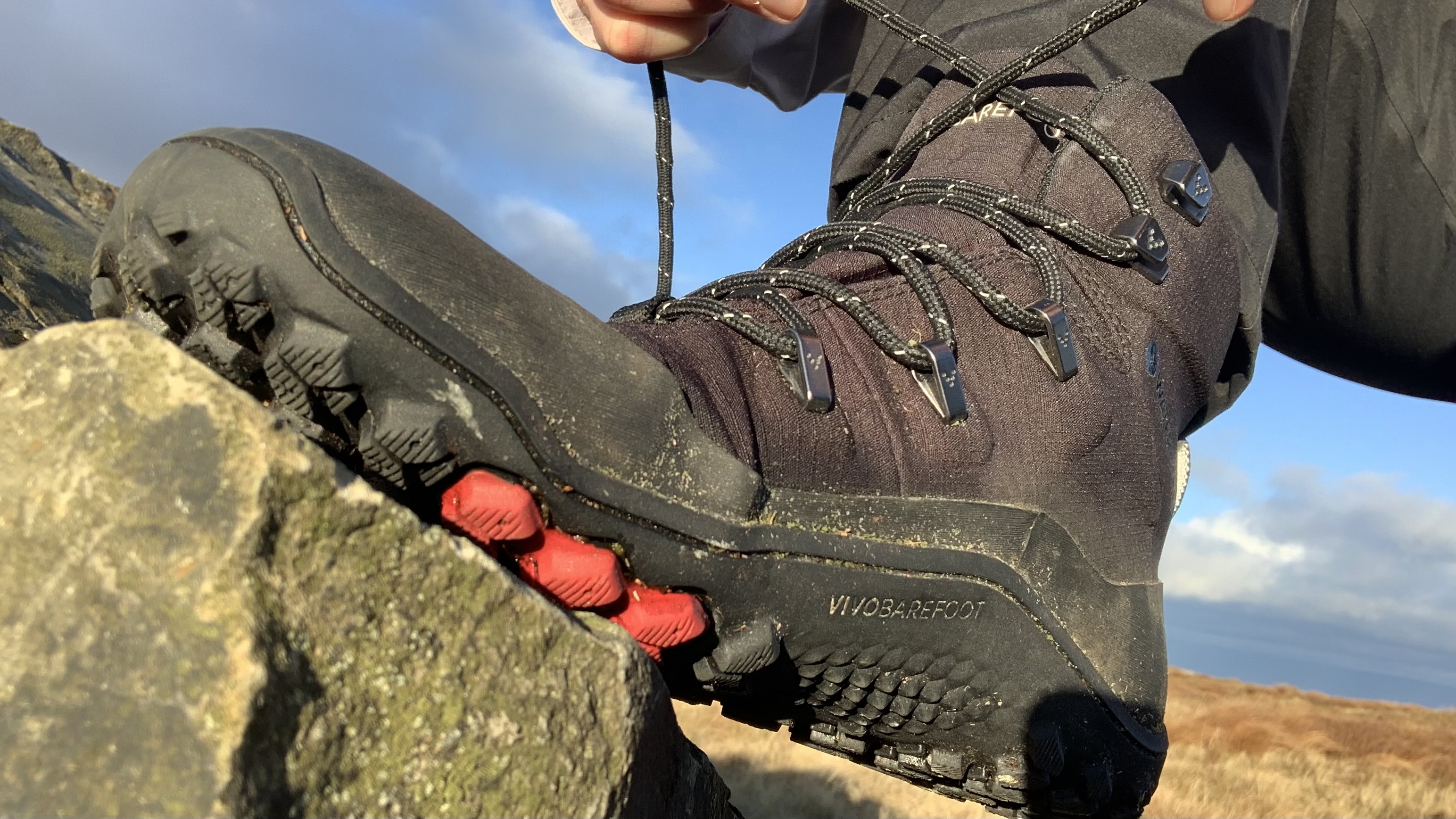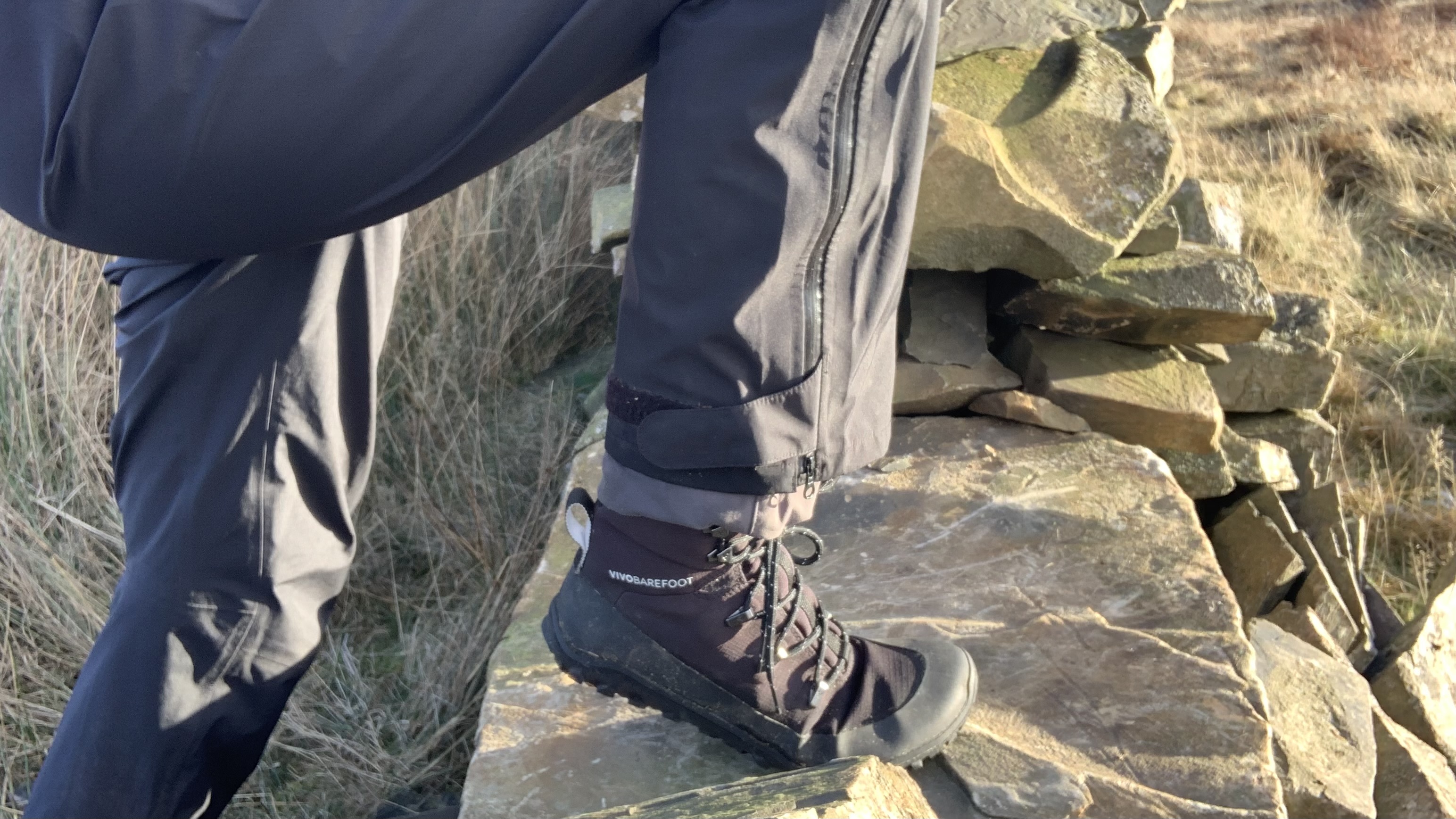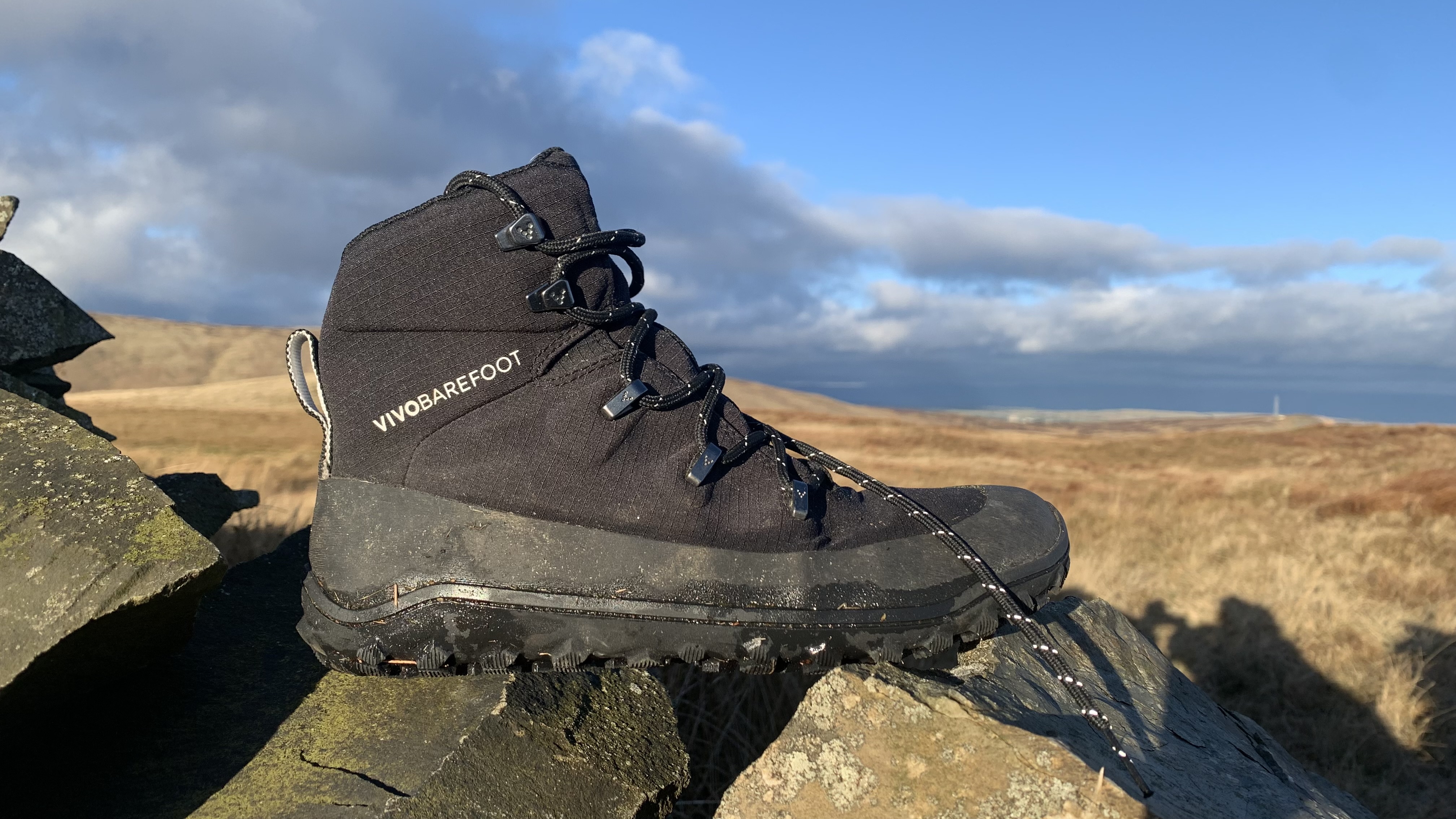Advnture Verdict
Vivobarefoot has taken its classic Tracker and upgraded it. Now fully recycled and vegan, this waterproof hiking boot provides the same level of trail feel and protection as its predecessors, but lets you tread lightly on the planet. It's extremely pricey and the outsoles aren't a match for the slickest of surfaces, but you'll be hard-pressed to find a better performer in the barefoot world.
Pros
- +
Extremely lightweight
- +
Excellent trail feel
- +
Comfortable and roomy
- +
Fully waterproof and breathable
- +
Removable thermal insole adds some insulating properties
- +
Excellent eco credentials and fully vegan
- +
Easy to pack when traveling
Cons
- -
Eye-wateringly expensive
- -
Grip fails on wet stone and steep, muddy slopes
You can trust Advnture
Vivobarefoot Tracker Textile AT hiking boots: first impressions
The Vivobarefoot Tracker Textile AT is here, with a few upgrades on this classic from the barefoot industry leader. This barefoot hiking boot is now made from fully recycled and fully vegan content, which means every step you take on the trail potentially has a lighter impact on the planet. For a barefoot shoe, however, it's still a heavyweight when it comes to performance.
With a predictably roomy fit and wide toe box, there's plenty of space for your toes to splay naturally, making it one of the best hiking boots for wide feet. The 2.5mm midsole is so flexible you could practically roll it up, which makes these ideal for that intimate trail feel and also for packing.
• List price: £200 / $250
• Sizes available: Men's US 7 - 14, UK 6 - 14; Women's US 4.5 - 11, UK 2.5 - 9
• Weight (per boot, US women's size 5): 14oz / 406g
• Lug depth: 4mm
• Materials: Upper: 95% Recycled Polyester, 5% Spandex; Insole: 40% Polyester, 40% PU Foam, 20% Aluminum; Outsole: 20% Natural Rubber, 55% Synthetic Rubber, 25% Additives
• Colors: Obsidian, Silver Birch, Terracotta
• Best use: Hiking
Though these boots are extremely lightweight, the uppers afford your feet and ankles a decent amount of protection on rocky trails, and the waterproof membrane has proved watertight even on river crossings. Barefoot boots are never the warmest choice, but a removable thermal insole has made it possible for us to hike comfortably in these during some zero-degree days.
The grippy outsoles have served us well across country paths, frozen bogs, wet leaves and steep slopes and the 4 mm lugs also provide a bit more distance between your foot and the ground. That said, we did find wet rocks and steep, muddy slopes a bit much even for these shoes and skidded a few times, but then again, it's easier to catch yourself in barefoot shoes.
It's fair to say that at $250, you're likely to think twice about buying these, especially if you've never tried barefoot shoes before, but we think you'll have a hard time finding another pair that performs as well as these, especially if you're venturing out in wet and cold conditions.
Vivobarefoot Tracker Textile AT hiking boots: in the field

I'm not exactly a barefoot shoe veteran, but last year I wore a pair of the Vivobarefoot Magna Lite SG hiking boots every day for six weeks and really discovered some amazing benefits. Those boots, however, are purely for summer hiking, so I was keen to try a pair of the Trackers, which are better built for cold and wet conditions.
These boots showed up a couple of months ago and I took them on a family holiday to break them in (though none is required) over a week of gentle walks in the countryside and since then, I've tested them out on frozen bogs in the Lake District and up some smaller hills and peaks in Scotland.
All the latest inspiration, tips and guides to help you plan your next Advnture!
Here's how they performed:
Sizing, fit and comfort
I tested a US 6 (UK 4) which is a half size up from my normal size the size I usually choose in hiking and running shoes to give my feet room to swell. Of course, the nature of barefoot shoes is that they have a wide toe box and a roomy fit, so I probably didn't have to size up, but while these definitely feel spacious, I haven't had any issue with them being too loose. A good tight knot around the ankle keeps them in place and leaves my feet with plenty of room to swell.
Like the Magna Lites, I'm mostly impressed by how comfortable these are, however on a recent short and steep hike, I did notice that I had a little rubbing around my heels. This hasn't been an issue previously on flatter walks and it wasn't bad enough to make me not wear them, but something I'll definitely be conscious of.

Protection and breathability
I don't think of barefoot shoes as offering a ton of protection, but these are a bit of an exception. The upper, while light and flexible, still manages to provide my feet with a bit of cushioning against rough trails. They might not be as warm as a pair of winter boots, but the thermal insert definitely has made a difference during what has turned out to be a record-cold November here, and I think it's great that you can remove it in the summer.
To test the waterproof membrane, I stood in a shallow river on my first day out in these and not a drop got in, so I've been happily wading through bogs and wet grass in them.
As for what's underfoot, I'm once again impressed by how I can get a really intimate experience of the trail and no actual discomfort when I'm walking over stony paths.
I've mostly been wearing these boots in cool or cold weather, so I can't say for certain that they're going to be ultra-breathable in the hottest conditions, but so far I've not struggled with sweaty feet.
Traction and stability
The AT in these boots stands for "All Terrain" and for my first month of wearing these, I was really impressed with the traction as I didn't slip once over muddy trails or frozen bog. The outsoles have really deep lugs which have the added bonus of creating a little space between my feet and the trails. More recently, however, I discovered that the outsoles have their limit, and that limit seems to be slick rock and very steep, muddy trails. I did skid three or four times on a recent hike under those conditions.
Like a lot of the best hiking gear, I can imagine happily wearing these on just about any Rocky Mountain hike, but here in the UK, I might need a different pair of boots for slick days.
That said, the beauty (for me) of barefoot shoes is that I'm just overall more stable and balanced on the trails, so a slip here or there isn't as difficult to rebound from as when I'm wearing sturdy boots with stiff soles. These soles are extremely flexible which means I can walk really effortlessly across all types of challenging terrain, so long as it's not too slippery.

Vivobarefoot Tracker Textile AT hiking boots: the bottom line
The Tracker AT might not really be for all terrain, but it definitely holds up against the best of them. If you're seeking the performance of a flexible barefoot shoe but want a bit more protection than your average style, you'll love this boot, although be warned the grip isn't failsafe on the slickest surfaces. It has great eco creds, but a big price tag. That said, we think you get more for your money than the similarly priced Magna Lite SG.
Julia Clarke is a staff writer for Advnture.com and the author of the book Restorative Yoga for Beginners. She loves to explore mountains on foot, bike, skis and belay and then recover on the the yoga mat. Julia graduated with a degree in journalism in 2004 and spent eight years working as a radio presenter in Kansas City, Vermont, Boston and New York City before discovering the joys of the Rocky Mountains. She then detoured west to Colorado and enjoyed 11 years teaching yoga in Vail before returning to her hometown of Glasgow, Scotland in 2020 to focus on family and writing.


